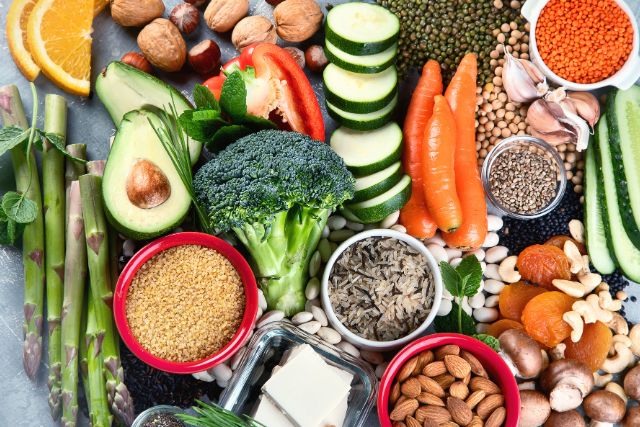Recent Posts
-

- Diabetes-Friendly Nutrition: Smart... 08.12.2024
-

- Nutrition for Chronic... 08.12.2024
-

- Anti-Inflammatory Diet: Food... 08.12.2024
-

- Low-Sodium and Heart-Healthy:... 08.12.2024
-

- Plant-Based Diets for... 08.12.2024
The Benefits of Eating the Colors of the Rainbow for Your Heart

What? Can you eat the colors of the Rainbow.? Not exactly what you’re thinking of.
Living a long and healthy life is impossible without properly caring for one's body. In particular, our hearts, since the heart is the muscle that sits at the epicenter of our circulatory systems. As your heart beats, it accomplishes its function of circulating blood throughout the body. This blood distributes oxygen and nutrients to every region of your body and removes waste items and harmful carbon dioxide from your system.
Consuming meals that may boost the nutritional intake of the heart is one way to take care of our cardiovascular system. Did you know there is a solution to this problem that may be found in vegetables?
Because they include phytonutrients, colorful fruits, and vegetables may create a beautiful picture of health. Phytonutrients are substances that give plants their rich hues, as well as their particular tastes and fragrances. Phytonutrients have been shown to improve a plant's resistance to disease. They shield the plant from dangers that may be found in its natural habitat, such as diseases and too much exposure to the sun.
Try including as many different plant-based colors as possible in your meals and snacks. Because no one color is better than the others in terms of health advantages, consuming a variety of hues is essential to achieve a healthy balance. To consume the most phytonutrients, it is necessary to finish the darker skins, the most concentrated sources of phytonutrients, and the lighter meat.
Here is a reference for you to read to understand better what each hue of the rainbow offers you.
Fruits and vegetables with a red coloration.
These include lycopene, which has been shown to promote cardiovascular health, lower the chance of developing prostate and breast cancer, prevent strokes, and boost cognitive performance. Tomatoes, beets, radishes, cherries, strawberries, red onions, and red peppers are excellent food sources of the antioxidant lycopene.
Fruits and vegetables with orange and yellow hues
These include carotenoids, which have been shown to lower the risk of cardiovascular disease and inflammation, enhance the immune system, improve eyesight, and contribute to healthy skin and hair. Carrots, winter squash, apricots, yellow peppers, sweet potatoes, bananas, pineapple, mangoes, pumpkins, peaches, and oranges are all excellent sources of carotenoids. Other good sources include peaches and oranges.
Green fruits and vegetables
These items include indoles and isothiocyanates, two compounds linked to reduced cancer risk. In general, meals like these are rich sources of vitamin K, potassium, fiber, and several antioxidants. Folic acid, which helps prevent birth abnormalities in the neural tube in newborns, is also included in several foods. Spinach, arugula, broccoli, Brussels sprouts, avocados, kiwis, green tea, asparagus, fresh green herbs, kale, and artichokes are rich in this nutrient.
Fruits and vegetables with white and brown flesh
These have anti-cancer qualities thanks to the flavonoids and allicin that they contain. They have also been shown to lower blood pressure and cholesterol levels, enhance bone density and lessen the incidence of stomach cancer. Onions, mushrooms, cauliflower, leeks, and garlic are good sources of this nutrient.
Fruits and vegetables with blue and purple coloring
Better memory and overall brain health are two benefits related to the presence of these anthocyanins and antioxidants. They also assist in lowering blood pressure and lessen the likelihood of having a stroke or developing heart disease. Blueberries, blackberries, eggplant, figs, purple cabbage, concord grapes, and plums are some foods rich in this nutrient.
Disclaimer: The information provided in this article is for general information purposes only. All information in this article is sourced from other websites, and we do not represent any rights regarding the contents and information on the site. All rights belong to their original owner.
Sources:





